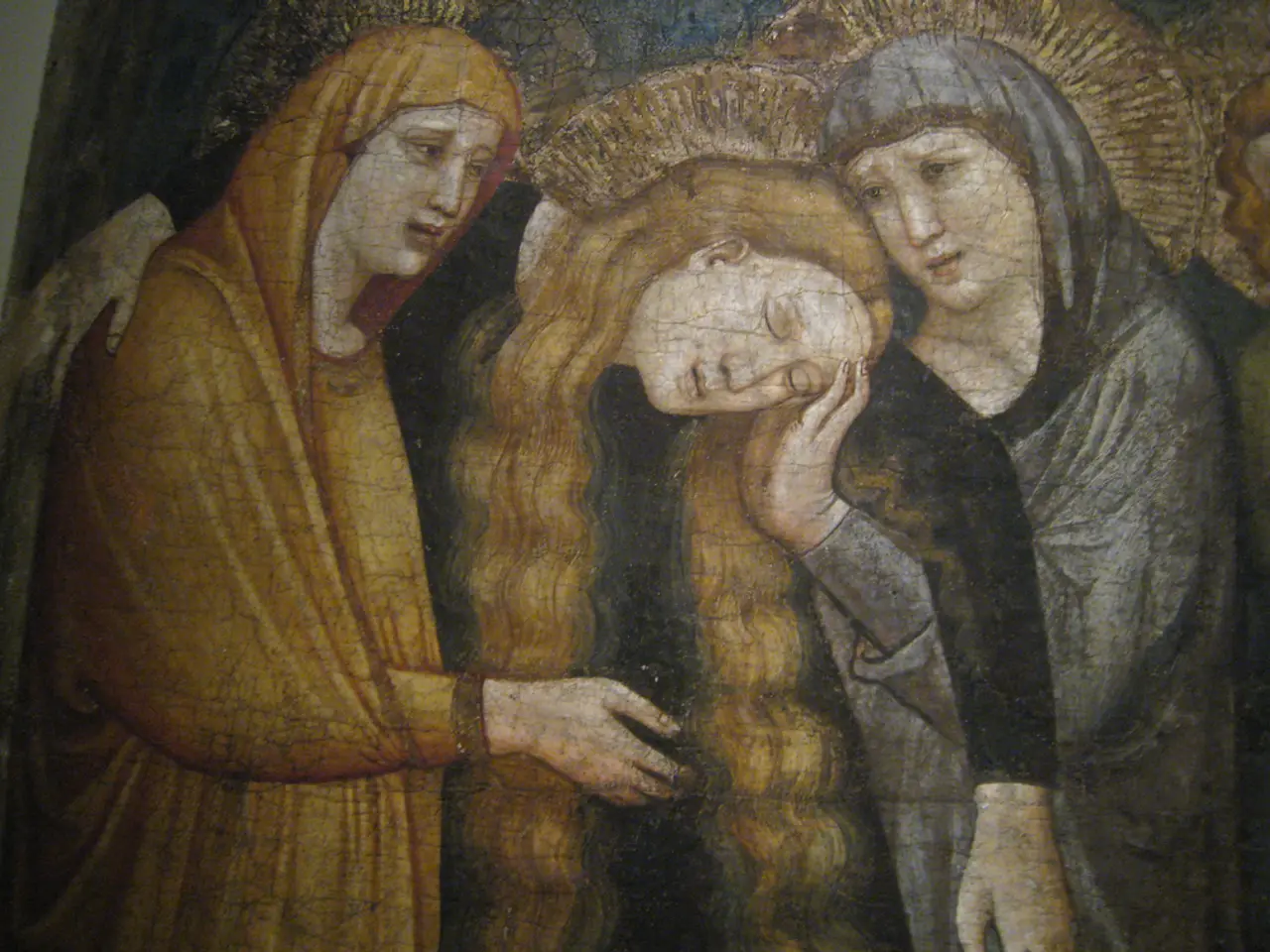Celebrating Paternal Support: Artistic Daughters Whose Fathers Cheered Them On in Their Professional Pursuits
**Fathers Pave the Way for Female Artists' Success: A Historical Perspective**
The support and encouragement of fathers have played a pivotal role in shaping the careers and artistic development of many notable female artists throughout history. In an era where women artists often faced significant barriers, these fathers provided essential moral, educational, and sometimes direct artistic training support that enabled their daughters to access art education, professional opportunities, and social acceptance in the art world.
One such example is Sofonisba Anguissola, an Italian Renaissance painter, who received training from local painters due to the support of her father, Amilcare Anguissola. Amilcare, a nobleman inspired by humanist ideas, actively encouraged all his daughters to cultivate their talents. He provided Sofonisba with an environment that valued education and art, enabling her to become highly accomplished. Amilcare's support helped Sofonisba become a renowned painter and eventually an official painter for King Philip II. Sofonisba also taught her younger siblings, indicating the strong artistic foundation their father fostered.
Another notable figure is Angelica Kauffman, a neoclassical painter who enjoyed a successful career across Europe. Her father, Johann Joseph Kauffman, was a painter himself and instructed and supported Angelica from childhood. This direct artistic lineage and encouragement allowed Angelica to develop her skills early and gain international fame. Angelica was one of the founding members of the Royal Academy of Arts in London.
Camille Claudel, a French sculptor, was encouraged by her father, Louis-Prosper Claudel, to move to Paris and train under notable sculptors. His encouragement helped Camille pursue her sculpture career despite the gender obstacles of the time. Berthe Morisot, a French painter and prominent Impressionist, received private lessons and had a studio in her home due to the support of her father, Edme Tiburce Morisot.
In the modernist era, Georgia O'Keeffe, an American artist, received education at the Art Institute of Chicago and the Art Students League in New York due to the financial support of her father, Francis Calyxtus O'Keeffe. Her father supported her artistic inclinations from a young age, encouraging her interest and studies in art. This encouragement helped pave the way for her to become a pioneering modernist painter.
Frida Kahlo, an iconic Mexican artist, received support from her father, Guillermo Kahlo, who recognized her artistic talent and encouraged her creative pursuits from a young age. Guillermo provided Frida with artistic materials and taught her technical skills related to photography, influencing her attention to detail and composition in painting. During Frida's long convalescence after the bus accident, Guillermo fostered an environment where she could focus on her painting.
Elisabetta Sirani, an Italian Baroque painter, created a large body of work in her short life due to the support of her father, Giovanni Andrea Sirani. Giovanni provided professional artistic training and mentorship to his daughter, who became a prolific Baroque painter.
Eva Gonzalès, a leading Impressionist female artist, benefited from her father's, Emmanuel Gonzalès, encouragement and support. Emmanuel, being a writer and art enthusiast, provided her with the environment and opportunities to develop her talent, including arranging for her to study under Édouard Manet.
Lastly, Alfred Frankenthaler's encouragement and financial support enabled Helen Frankenthaler to pursue her passion for art and explore new techniques, leading to her success as a leading figure in the abstract expressionist movement.
In summary, the pattern highlights the importance of familial support in overcoming gender constraints in the arts. These fathers' encouragement helped their daughters access art education, professional opportunities, and social acceptance in the art world, thereby significantly shaping their artistic careers and legacies.
- The educational and artistic support of fathers has played a crucial role in the personal growth and career development of many renowned female artists, even in eras heavily burdened with gender barriers.
- In addition to Sofonisba Anguissola, Angelica Kauffman, Camille Claudel, Berthe Morisot, Georgia O'Keeffe, Frida Kahlo, Elisabetta Sirani, and Eva Gonzalez_, their fathers' encouragement and training allowed them to break through traditional barriers in the art world and achieve widespread acclaim.
- From the Italian Renaissance to the modernist era and beyond, these female artists have shown that family-dynamics can significantly shape a child's lifestyle, from education and self-development, to their eventual success in their chosen careers, such as art.
- Fathers like Amilcare Anguissola, Johann Joseph Kauffman, Louis-Prosper Claudel, Edme Tiburce Morisot, Francis Calyxtus O'Keeffe, Guillermo Kahlo, Giovanni Andrea Sirani, Emmanuel Gonzalez_, and Alfred Frankenthaler fostered an environment that championed education, art, and creativity within their families, resulting in permanent impacts on the home-and-garden of art history.
- The encouragement of these fathers allowed their daughters to forge relationships with other artists, arts institutions, and patrons, opening up new opportunities and propelling them to international recognition.
- Lastly, these inspiring stories from the annals of art history provide news for us all, reinforcing the powerful message that a supportive family environment can be the foundation for success not only in art but in many other aspects of an individual's life.




